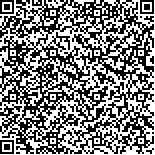下载中心
优秀审稿专家
优秀论文
相关链接
摘要

核驱动的Ross Thick-LiSparse Reciprocal (RTLSR)双向反射函数(BRDF)模型已广泛地应用于MODIS等星载传感器的业务化产品处理中。但是,对于多年MODIS二向反射产品历史数据,如何基于RTMLSR模型发展一种简单有效快速的方法,进行热点效应的校正是一个迫切需要解决的问题。本文提出了一种简单有效的方法,不需要对观测数据重新反演,直接在现有MODIS二向反射产品的基础上进行热点校正,方便用户对历史MODIS二向反射产品的使用。该方法应用POLDER-3/BRDF数据库和部分经MODIS业务化算法筛选的反射率数据进行验证,并与RTLSR模型和RTMLSR模型的结果进行比较,结果表明:(1)该方法比现有的MODIS业务化RTLSR算法,对热点反射率有明显改善,拟合相对误差平均降低了10.12%;(2)该方法相对于RTMLSR模型在热点反射率拟合效果上差别不大,相对误差相差2.10%;(3)该方法对热点和冷点归一化的植被指数(NDHD)的估算效果有一定程度的改善,相对于RTLSR模型降低了约4.99%,与RTMLSR模型的相对误差相差1.32%,该方法对直接应用现有MODIS BRDF产品,基于热点方向反射率反演植被结构参数(如植被聚集指数)的精度提高有现实应用价值。
An algorithm for modeling bidirectional reflectance anisotropies of land surfaces has been developed as a surrogate for the operational MODIS Bidirectional Reflectance Distribution Function (BRDF) and albedo product for user community. This algorithm is a set of kernel-driven BRDF models extensively used in several space-borne remotely sensed BRDF/albedo products. Among these models, RossThick (RT)-LiSparseR (RTLSR) has been selected as the current operational MODIS BRDF/albedo algorithm. However, the hotspot effect has not been considered in RT kernel. As such, the use of an RTLSR model underestimates hotspot reflectance, thereby influencing the accuracy of the retrieval of vegetation structures, such as clumping index. On the basis of Bréon's hotspot factor, Maignan corrected RT kernel to generate a RTMaignan (RTM) kernel. For producers, a 13-year MODIS BRDF/albedo product is reprocessed using this corrected model, but this task is time consuming. For users, the direct use of this corrected model for MODIS observations is complicated because the equivalent inputs of the operational RTLSR algorithm are not easily available. In this study, a method was developed to correct the hotspot effect for the operational MODIS BRDF product, which is available for users. Based on the effective validation using POLDER-3/BRDF data and the selected MODIS data, this study shows that (1) an improvement of approximately 10.12% of relative error between our method and the RTLSR model can be obtained by estimating the hotspot reflectance; (2) a relative error of approximately 2.10% occurs between this method and the RTM-LiSparseR (RTMLSR) model, but this difference is not significant; (3) relative error reaches approximately 4.99% between this method and the RTLSR model to simulate NDHD but decreases to approximately 1.32% between this method and the RTMLSR model.

